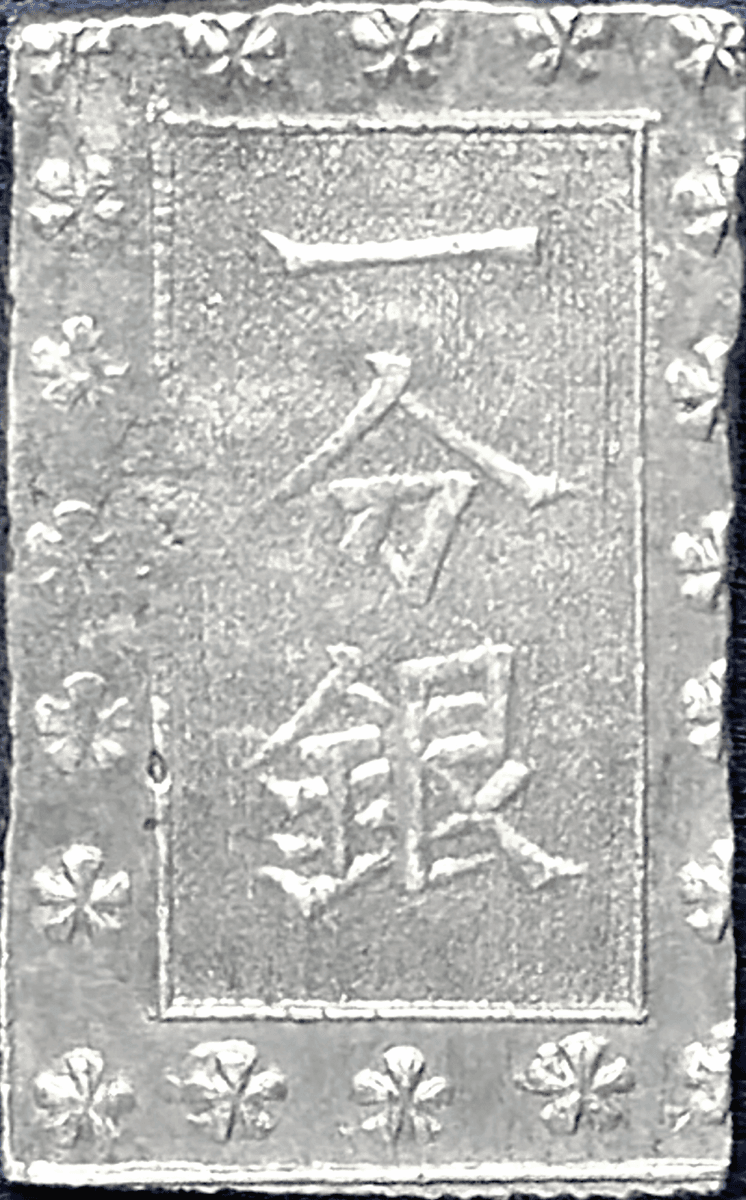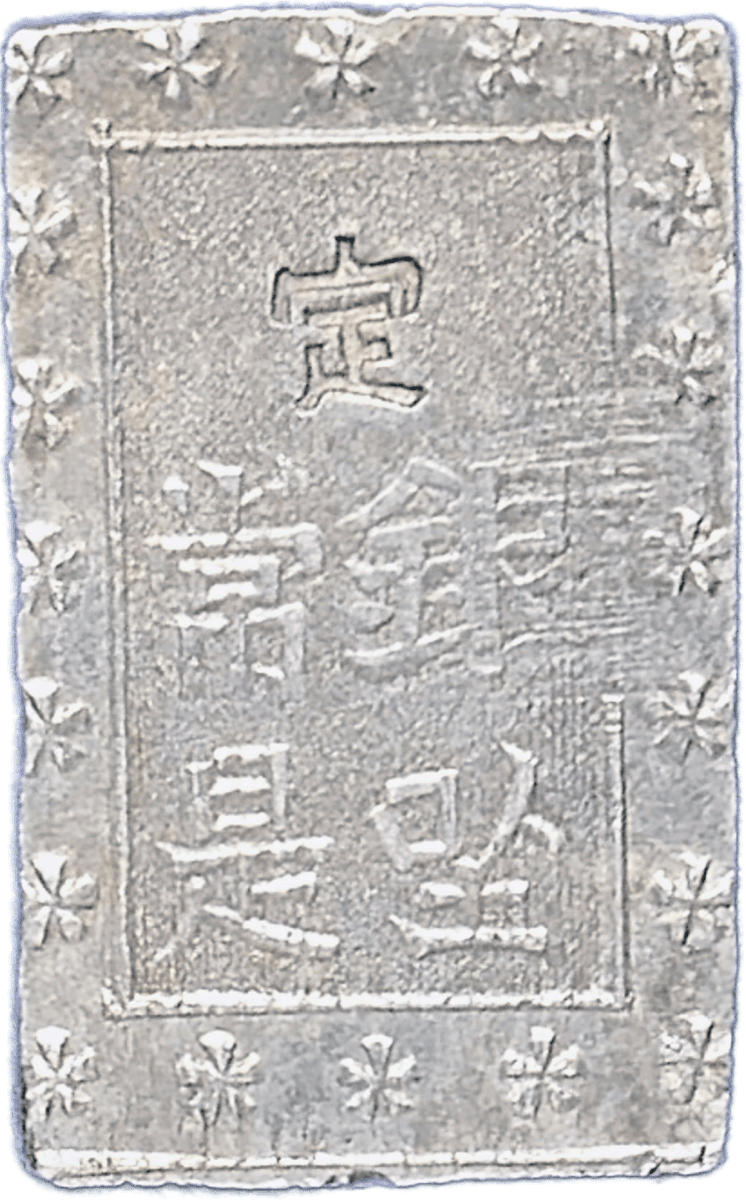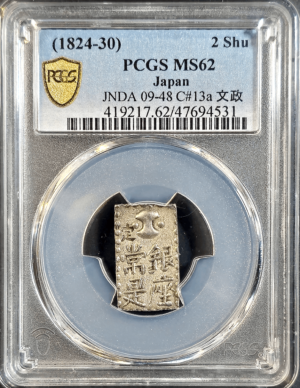Exploring Japan’s Silver Shu: Shogun Era, Mid-1800s
$95.00 & Free Shipping
Discover the fascinating history of Japan’s Silver Shu during the Shogun Era in the mid-1800s. This article delves into the economic and cultural significance of these silver coins, exploring their role in trade, their intricate designs, and their impact on Japan’s financial landscape during a pivotal period of transformation.
1 in stock
Description
The Role of Silver Shu in Shogun Era Japan
During the Shogun era, particularly in the mid-1800s, the Silver Shu played a pivotal role in Japan’s monetary system. The Silver Shu, a form of currency, was integral to the economic framework established by the Tokugawa shogunate. This period was marked by a rigid class structure and a closed economy, where the use of silver coins facilitated trade and commerce within the country. The Silver Shu was not only a medium of exchange but also a symbol of the shogunate’s power and control over the economy. It was used extensively in transactions involving the samurai class, merchants, and artisans, thereby ensuring the smooth functioning of the domestic market.
- Weight 8.5 grams
- Size 7/8″ X 9/16″ rectangular
- Value – 2 Shu
- Content .845 Silver
The introduction and circulation of the Silver Shu were carefully regulated by the shogunate to maintain economic stability and prevent inflation. The government controlled the minting process, ensuring that the silver content of the coins remained consistent. This control was crucial in maintaining the trust of the populace in the currency, as fluctuations in the value of money could lead to economic instability. The Silver Shu also played a role in the shogunate’s foreign trade policies, as it was used in limited international transactions, particularly with China and the Dutch, who were among the few foreign entities allowed to trade with Japan during this period. Thus, the Silver Shu was not only a domestic currency but also a tool of diplomacy and international trade.
Economic Impact of Silver Shu in the 1800s
The economic impact of the Silver Shu in the 1800s was significant, as it facilitated the growth of a market economy within the confines of the shogunate’s policies. The use of silver coins allowed for the expansion of commerce and trade, which in turn led to the development of urban centers and a more complex economic structure. Merchants and traders relied on the Silver Shu for transactions, which helped in the accumulation of wealth and the rise of a merchant class that would later play a crucial role in Japan’s modernization. The circulation of silver coins also encouraged the development of financial institutions, such as moneylenders and early forms of banks, which provided credit and facilitated larger commercial ventures.
However, the reliance on the Silver Shu also exposed the Japanese economy to certain vulnerabilities. The value of silver on the international market fluctuated, which could impact the domestic economy. Additionally, the limited supply of silver sometimes led to shortages, affecting trade and commerce. Despite these challenges, the Silver Shu remained a cornerstone of the Japanese economy until the Meiji Restoration, when Japan began to modernize and adopt a new monetary system. The legacy of the Silver Shu is evident in the way it laid the groundwork for Japan’s transition from a feudal economy to a more modern, industrialized nation. Its role in shaping the economic landscape of the Shogun era underscores the importance of currency in the development of a nation’s economy.



